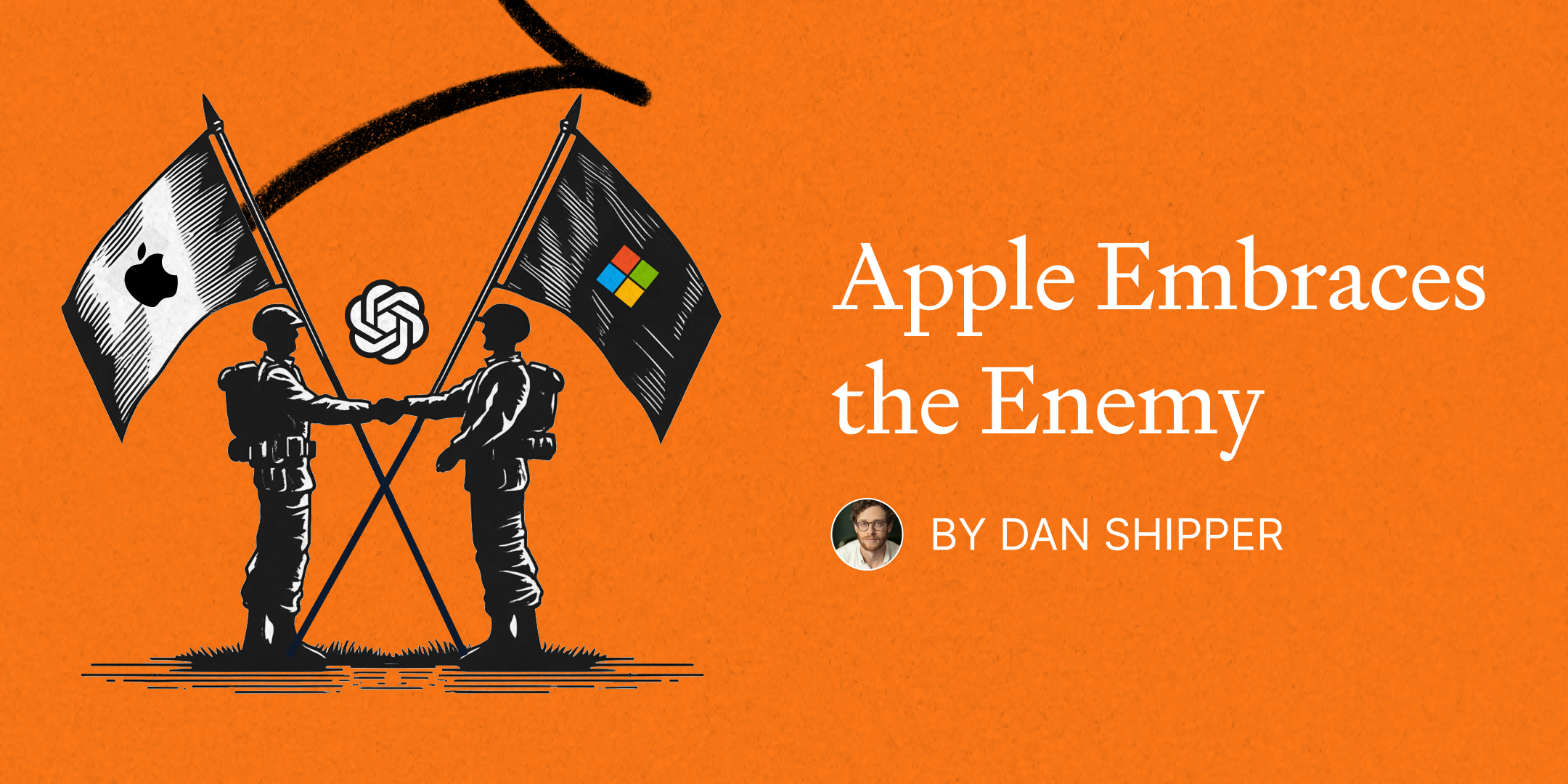Apple Embraces the Enemy

🌈 Abstract
The article discusses the integration of ChatGPT, the popular AI chatbot, into the operating systems of tech giants Microsoft and Apple. It explores the implications of this integration, the strategies of the companies involved, and the potential impact on the AI ecosystem.
🙋 Q&A
[01] The integration of ChatGPT into Microsoft and Apple's operating systems
1. What are the key points about the integration of ChatGPT into Microsoft and Apple's operating systems?
- Microsoft and Apple, traditionally fierce rivals, are now integrating ChatGPT, an AI chatbot closely allied with Microsoft, into their respective operating systems.
- Apple is integrating ChatGPT as a backup option for its newly enhanced Siri assistant, which will now be able to call on ChatGPT when it cannot answer a query.
- Both Microsoft and Apple are also focusing on developing their own on-device AI models, using them as the primary option and only resorting to cloud-based models like ChatGPT for more complex requests.
- The integration of ChatGPT into the operating systems of these tech giants is seen as a significant development in the AI ecosystem.
2. Why did Apple choose to integrate ChatGPT, given that it has built its own AI models?
- Apple's own AI models, while competitive with similar-sized models, are still limited in their capabilities compared to more advanced cloud-based models like ChatGPT.
- The author suggests that Apple likely turned to ChatGPT because it needed a more powerful and reliable AI solution to provide the best possible experience for its users, as its own models were not yet up to the task.
- Apple's benchmarks show that its cloud models only win 41% of the time against GPT-3.5-Turbo, which is already considered inferior to the latest ChatGPT-4 model.
[02] The implications for the AI ecosystem
1. How does the integration of ChatGPT into Microsoft and Apple's operating systems affect the power dynamics in the AI ecosystem?
- The author suggests that power will collect at the operating system layer, as the integration of AI into the core of the operating system will erode some demand for standalone AI chatbots like ChatGPT.
- Users will likely find it easier and faster to use the AI features baked into their device's operating system, which can leverage more context from the user's apps and websites.
- However, the author notes that the big tech companies are betting heavily on on-device AI models, with cloud-based models like ChatGPT serving as backups, which could pose a threat to ChatGPT's dominance in the consumer market.
2. What are the potential threats to OpenAI's position as the provider of ChatGPT?
- As Microsoft and Apple continue to develop their own on-device AI models with capabilities approaching those of ChatGPT, they may become less reliant on OpenAI's technology, posing a threat to ChatGPT's dominance.
- The author suggests that once on-device models reach a level of intelligence comparable to GPT-4, the big tech companies may be able to significantly reduce their dependence on cloud-based models like ChatGPT for many consumer use cases.
- However, the author also notes that OpenAI is in a strong position, as it has the leading consumer AI app in ChatGPT, which is being integrated into the products of Microsoft and Apple.
Shared by Daniel Chen ·
© 2024 NewMotor Inc.